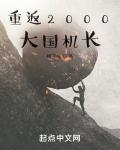Chapter 464: Stacking BUFF
The Ministry of International Trade and Industry originally wanted to learn about SIC's financing situation when they visited the company, but unexpectedly, the two sides spent a long time communicating about the field of Japanese semiconductors.
Although Japan still seems to occupy more than half of the semiconductor market share, the future situation is still unknown.
Regarding this point, after Shirakawa Kaede expressed his views, several people from the Ministry of International Trade and Industry already had some ideas in their minds.
After all, the future fate of Neon Semiconductor is not entirely determined by itself, and the US factor even accounts for more than half of it.
Moreover, due to the yen exchange rate and domestic bubble economy problems, the semiconductor friction between Japan and the United States has become even more complicated.
There is also the relationship between the government and the chaebols, which hinders Japan's overall planning in the semiconductor field.
In fact, there is one point that Shirakawa Feng did not elaborate on, that is, the United States has established its own semiconductor research institute modeled after Japan 's VLSI Research Institute.
Previously, the West was in a state of disarray, and major semiconductor companies that operated purely in a capital-based manner basically fought on their own.
But after seeing the power of Japan's VLSI Research Institute, the Americans also started to do the same.
It is led by 14 semiconductor companies including Intel, IBM, Micron, HP, and Motorola, and assisted by U.S. National Laboratories.
In the next five years, we will focus on promoting various advanced technologies in the semiconductor field so as to bring the United States' semiconductor technology to the same level as Japan as soon as possible.
In addition, the US government allocates $100 million each year to support SEMATECH's research and development budget.
This mechanism is exactly the same as that of Japan's previous VLSI Research Institute.
Lao Mi and others are also very practical. If they can't beat others, they will learn from others' models and then use them for their own benefit.
Although the final result is unknown, this is enough to illustrate the great pressure that Neon Semiconductor has brought to the United States.
In addition, in this era, the United States' semiconductor technology lags behind Japan in terms of technology.
Yes, you read that right. As the first country to license transistor technology to Japan, the United States is now lagging behind Japan in technology.
According to current process analysis, Japan's most advanced lithography machines can achieve 1 to 1.5 microns, but the mainstream in the United States is still in the 2.5-micron era.
Although the technical difficulty of DRAM is not high, both 2 microns and 3 microns are sufficient for the production of memory chips.
However, higher precision processes represent a country’s strongest strength in the semiconductor field.
In addition, DRAM may not have high requirements for the process, but CUP-level processors are particularly dependent on high-precision processes to improve their own performance.
For example, SIC's 32-bit chip 80381 has a maximum main frequency of 40MHz in many versions.
On the other hand, Intel also has a 32-bit chip, but the maximum main frequency is only around 30MHz.
Let’s not talk about which one is better or worse in terms of architecture, but in terms of performance ceiling, SIC’s ceiling is already higher than Intel’s.
This is also the reason why SIC can gradually open up the market in North America. If it doesn’t have good pricing, how can it succeed?
According to current market development, SIC may surpass Motorola and take the second place in processor chips next year.
But since Japan's chip manufacturing process is more advanced, why doesn't Intel let Japan's manufacturers do the manufacturing?
Because Intel had its own wafer fab at that time, the IDM model was the mainstream in the industry.
In addition to Intel, IBM, MOS, Zilog, Motorola, etc. all have their own wafer fabs.
So their chips are basically produced by their own factories. In this case, why would they look for other semiconductor companies to outsource them?
Even when these companies design chips, they initially use the capabilities of their own foundries as a reference for process.
Therefore, the performance of different chip companies will vary due to some subtle differences.
However, Intel is already closing its own wafer fabs, and the remaining production capacity is probably just enough to meet the shipment requirements of processor chips.
With the further development of globalization in the future, Motorola and IBM will most likely adopt SIC's fabless semiconductor model.
In addition, several people from the Ministry of International Trade and Industry believe that SIC is now approaching US capital in order to avoid possible future sanctions.
This is actually one aspect. The more important factor is that Baichuan Feng knows that the chip industry, especially the processor chips with the highest technical difficulty, will definitely tend to be centralized in the future.
In simple terms, in the high-tech field, there is a winner-takes-all phenomenon.
The so-called winner takes all means that the leader in the industry often occupies the vast majority of the market share and a huge proportion of profits.
Even the second or third ranked companies can only get a small share at most.
The reason for this phenomenon is that the high-tech industry has high barriers to entry. The company with the most advanced technology may not find a substitute in the market.
For example, in terms of CPU, there is a clear performance gap between 7nm and 5nm chips.
The normal choice of the market will tend to be 5nm chips with higher precision and better performance.
Over time, 7nm chips will be gradually eliminated, and the design companies behind them will find it difficult to continue.
Especially in an era when the IDM model is prevalent, Intel's ownership of wafer fabs will have a total asset scale effect on other peers.
For example, Intel and Motorola both make chips, but the former has an advantage.
If Intel sells 1 million chips and Motorola sells 300,000, will Motorola's profits be 30% of Intel's?
The answer is no. Not only will it not reach 30%, it may not even reach 3%. The more likely scenario is that Intel will make money while Motorola will lose money.
Although a chip may be sold for $30, the fixed cost of research and development may be hundreds of millions of dollars.
At this time, the more coins are sold, the lower the cost will be, so the cost of 1 million coins and the cost of 300,000 coins are two completely different concepts.
When the gap reaches a certain level, the cost of Intel producing a few more chips will be infinitely close to zero.
At this time, Intel can control the price of its own chips at any time, and it is difficult for competitors to survive .
The reason why Motorola gradually fell behind Intel and the development of new chips was repeatedly delayed was because of this reason.
If the market and profits can’t keep up, then R&D funding won’t keep up.
In the end, even if Intel did nothing, Motorola would slowly be dragged to death.
This is the situation that Baichuan Feng is worried about, but fortunately, Intel is not the only dominant company at this time, and it has just transformed into the processor market.
Intel, Motorola, SIC, MOS, and Zilog have almost divided up the main market.
Although there will be gaps, there is no company that dominates the market and can crush the others.
This gives SIC an opportunity. In fact, because it has focused on processor chips from beginning to end, SIC's team may even be better than Intel in some ways.
However, it is hard to say what the future will be like, especially with the rise of the computer trend and Intel's roots in the North American market.
If nothing unexpected happens, it will definitely be a giant in the future.
If SIC wants to break the winner-takes-all situation, its current advantages are far from enough.
First of all, due to its pure neon background, the US government will not allow it to replace Intel as the only dominant player.
The situation of Neon Semiconductor in the DRAM field can be regarded as a lesson for us. In the processor field, as long as SIC shows signs of crushing, Xiaomi will definitely interrupt its development.
That's why Baichuan Feng considered changing the skin of SIC and adding a buff. What could make the US government feel more at ease than having American capital background and being listed in the United States?
There’s no way around it in the world of capital, that’s how it works.
If SIC does not want to be confined to Neon in the future, then this is almost a necessary move.
After seeing off several officials from the Ministry of International Trade and Industry, Shirakawa Feng prepared to go talk to the people from Dai-ichi Kangyo Bank.
If SIC wants to be listed in North America in the future, it certainly cannot do it alone. It would be best to have a strong helper in Japan.
Dai-ichi Kangin is Shirakawa Feng's first choice, and he is even prepared to talk to Mitsui and Mitsubishi.
In the capital game of the North American market, Baichuan Holdings alone is still too weak.
Time flies, and it is already November.
I don’t know what kind of agreement the Japanese government has reached with the United States, but most of the 100% tariffs on electronic products have been canceled.
However, retaliatory tariffs on semiconductors still exist, but this is no longer the focus of Baichuan Feng's attention.
For Shirakawa Electric, as long as the tariffs on finished products are cancelled, everyone can breathe a sigh of relief.
In just a few months, Shirakawa Electric lost more than 2 billion yen in profits.
The export business was already difficult to do, and with this incident happening, it is indeed not .
Alas, the golden age of the whole nation has arrived , but the golden age of manufacturing has gradually faded away.
Stimulated by this, almost all large companies in Japan are increasing their overseas investments.
Japan is no longer suitable as a production base for export trade, and Southeast Asia, with its lower labor costs, has begun to become a target of investment.
Shirakawa Electric is also taking action. In addition to China, Shirakawa Electric has investments in Yizhou, Lijiaopo, and even Korea.
In addition to manufacturing, Shirakawa Holdings is also making overseas financial investments.
Kitato Bank has invested more than one billion US dollars in international financial institutions such as the Asian Development Bank and the IMF.
As a regional investment bank, the AIIB's mission is to help its developing member countries alleviate poverty and improve people's quality of life.
In fact, to put it bluntly, it is to provide loans to relatively backward countries to help their economic development.
Currently, the main loan recipients of the AIIB are the Southeast Asian countries of Afghanistan, Thailand, Malaysia, Korea, and Philippines.
And since it is a loan, there is of course interest.
As the largest shareholder of the AIIB, Japan is undoubtedly the country that has benefited the most.
A group of banks including Bank of Japan, Mitsui, Mitsubishi, Sumitomo, and Dai-ichi Kangyo Bank holds more than 42% of the shares of the AIIB.
Now that Kitafushi Bank has also joined in, when Southeast Asian countries repay the interest to the AIIB in the future, Kitafushi Bank will also have its own share of the profits.
And as the investment share becomes larger and larger, the future profits will also increase.
Carrying out financial business in Japan can no longer meet the expansion needs of Kitato Bank.
Shirakawa Holdings plans to continue to invest a total of US$5 billion in the AIIB over the next five years.
In the next few decades, Southeast Asia's economic development will enter the fast lane.
The capital demands of various countries will gradually increase, and this is when Shirakawa Holdings' abundant foreign exchange reserves will come in handy.
Not to mention 5 billion, Shirakawa Holdings can also come up with 10 billion US dollars.
International investment not only brings huge returns, but can also quickly expand the visibility of Kitato Bank.
The same goes for the IMF and other international monetary funds. With money in hand, Shirakawa Holdings will make large investments around the world.
What is heritage? When you participate in global economic activities and can actively grasp and influence part of the context, that is the manifestation of heritage.






